One of the earliest descriptions of Castleisland was given by Gerald, fourth Earl of Desmond who almost sang it as ‘the sweetest island of Kerry’. A more contemporary description came from the pen of Castleisland’s Con Houlihan, ‘Not so much a town as a street between two fields’.
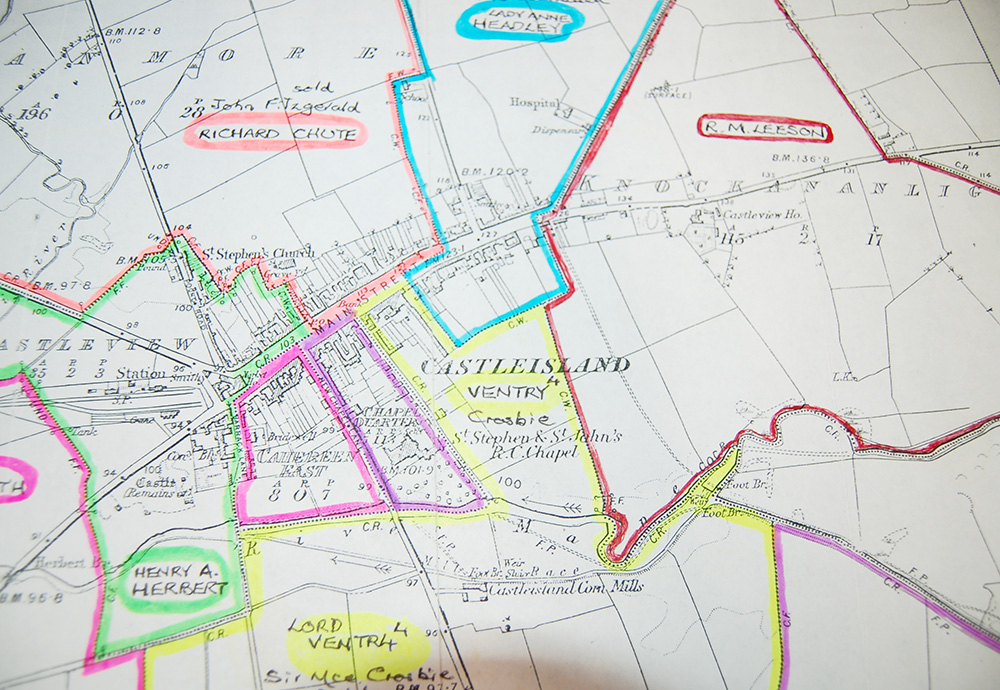
Michael O’Donohoe was interested in what people had to say, in centuries past, about the ‘street between two fields’. He compiled visitors’ descriptive accounts from the seventeenth to twentieth centuries, which gave varying impressions of the town as a ‘place of consequence’ to one of ‘dilapidation … owing to a dispute among the proprietors regarding the division of their respective interests’.
‘Full of cow-dung’
One document described how a sixteenth century visitor ‘went to view the Island, which is a high monstrous castle of many rooms but very filthy and full of cow-dung’.
Another item focused on the dramatic changes which occurred between 1822 and 1829. For example in 1822 there was ‘no shop which could supply anything beyond a farthing candle’. Seven years later, ‘several shops have been established at which clothing of all kinds and groceries can be purchased’.
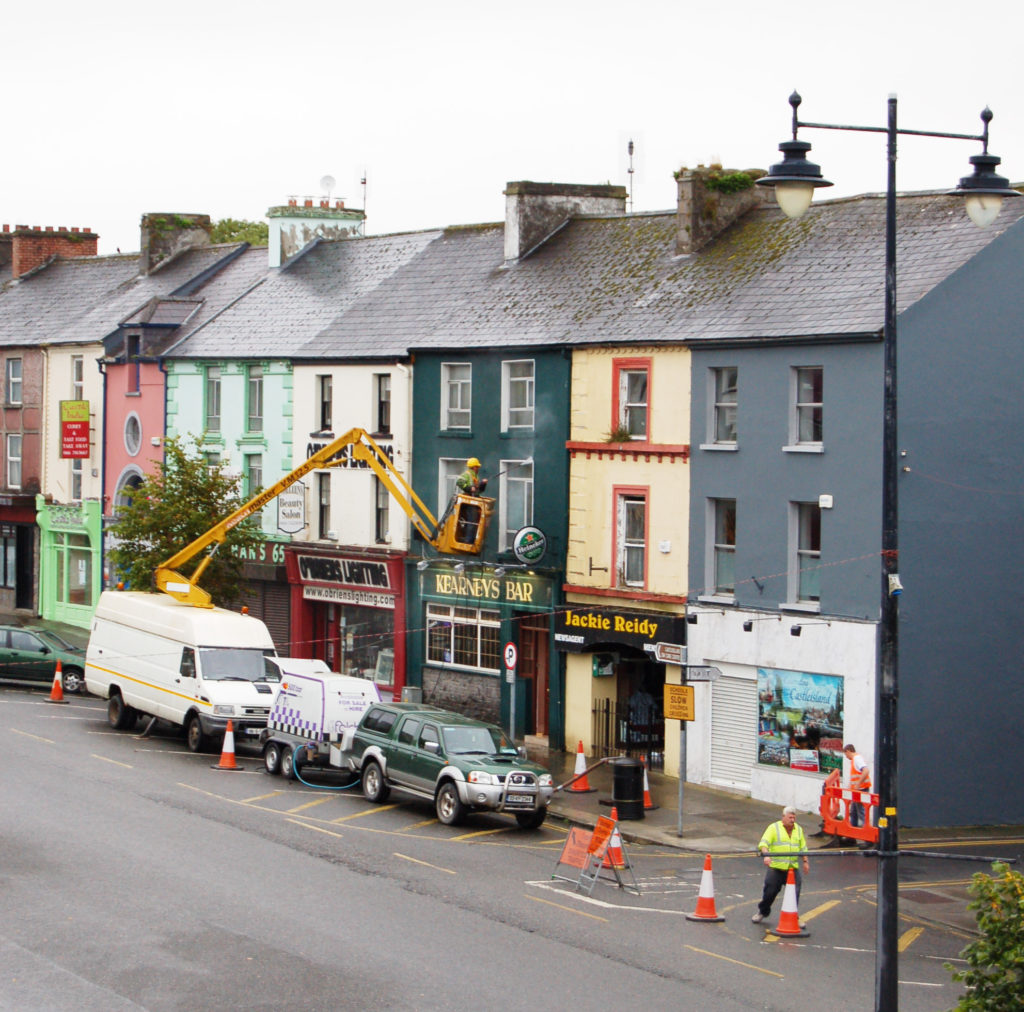
Nineteenth Century Castleisland
An elaborate mid nineteenth century sketch of Castleisland was given by John Florence Purdon Macarthy. The document conveys a remarkable history of the town.1
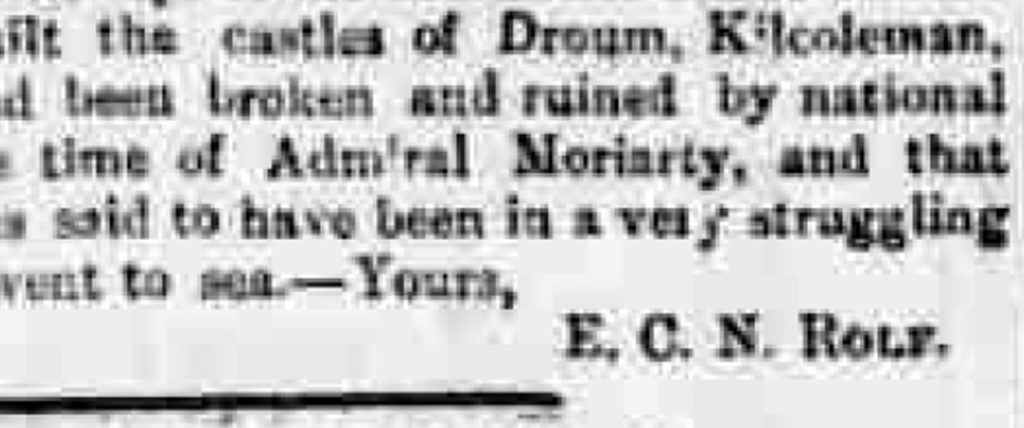
Macarthy was addressing ‘a spirit of change’ in Castleisland:
Castleisland, the home of so many potent Lords Deputy … architecture, arts, and arms distinguished this ancient place. But a spirit of change has passed over it, even within the last 50 years. With its wide street less macadamised than at present, it had far more numerous patrician families with greater diversity of fun and frolic.
Macarthy reminisced on duelling at Meanus, cock-fighting, dancing houses, scrumping, robbing geese for lime-kilns and the hilarities of local characters such as Firrheen Prendiville, John Talbot and John Saunders ‘the wild man’.
Castleisland: The Castle
Macarthy wrote about the castle and its legendary goose:
This was the home of a very great scholar, an Earl, Garrilogh Filea (Geraldine the poet), fourth Earl of Desmond, a renowned magician, whose sail down from the upper parapets of that vast edifice … supply pabulum to the sparkling legend of ‘gé unn Illahn’.2
It was near the castle, recalled Macarthy, that a bonfire had been lit to receive ‘the bride of Dr Harold after marriage’3 and where ‘recently’ part of the arch on the eastern high tower of the castle had fallen after ‘defying the ruffers of nearly 1000 years’.
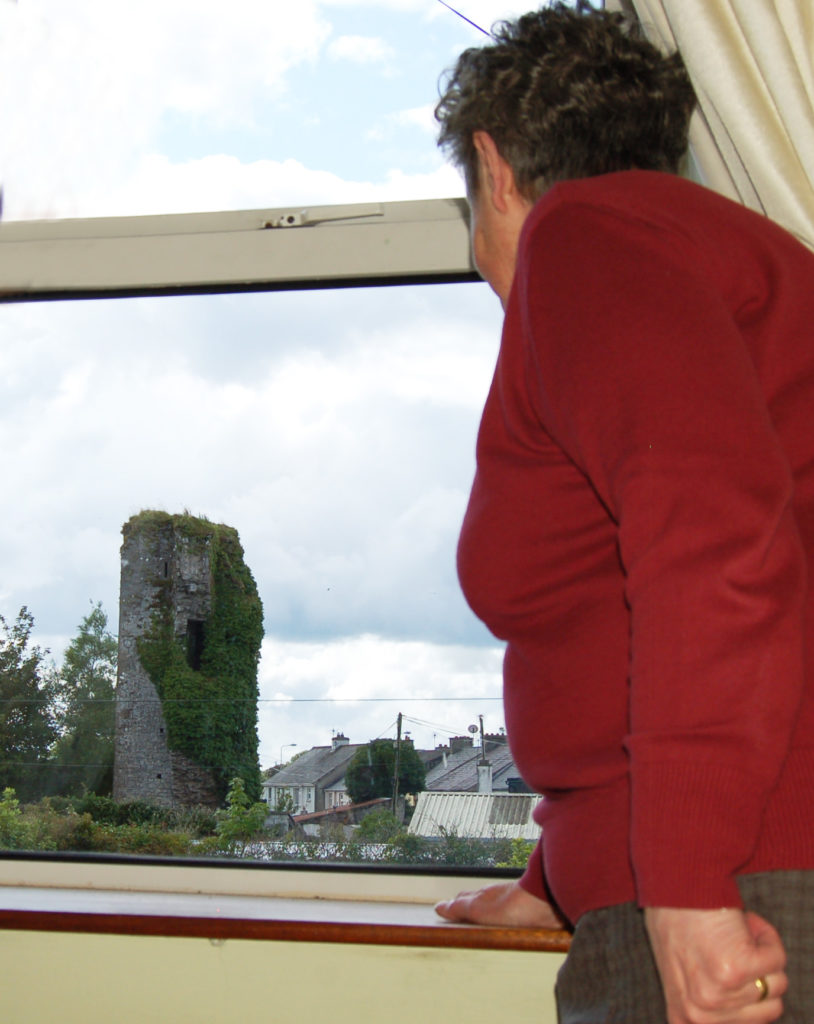
The fall of the castle wall put Macarthy in mind of the death of ‘the Venerated Father O’Leary’ who would be succeeded by Archdeacon O’Connell, ‘a man venerable not so much by age and appearance as by piety, talent, knowledge’.4
Castleisland Landlords
Macarthy discoursed on the landlords of Castleisland including the ‘late’ Lord Headley who ‘converted the desert into sylvan landscape’ and Major Fairfield, ‘a miracle worker in making the wilderness an oasis’:
This brilliantly gifted and most attractive looking officer of the guards … upon coming to the government of those estates … opened up with vast toil and expenditure a continuity of mountain defiles where the wild birds had previous footing.
Major Fairfield built himself a residence in ‘a picturesque recess’ by ‘a very remote mountain vale’:
He called it Mount Eagle from Knockniolar (Hill of the Eagle) an enclosed theatrical glen on the way from Castleisland.5
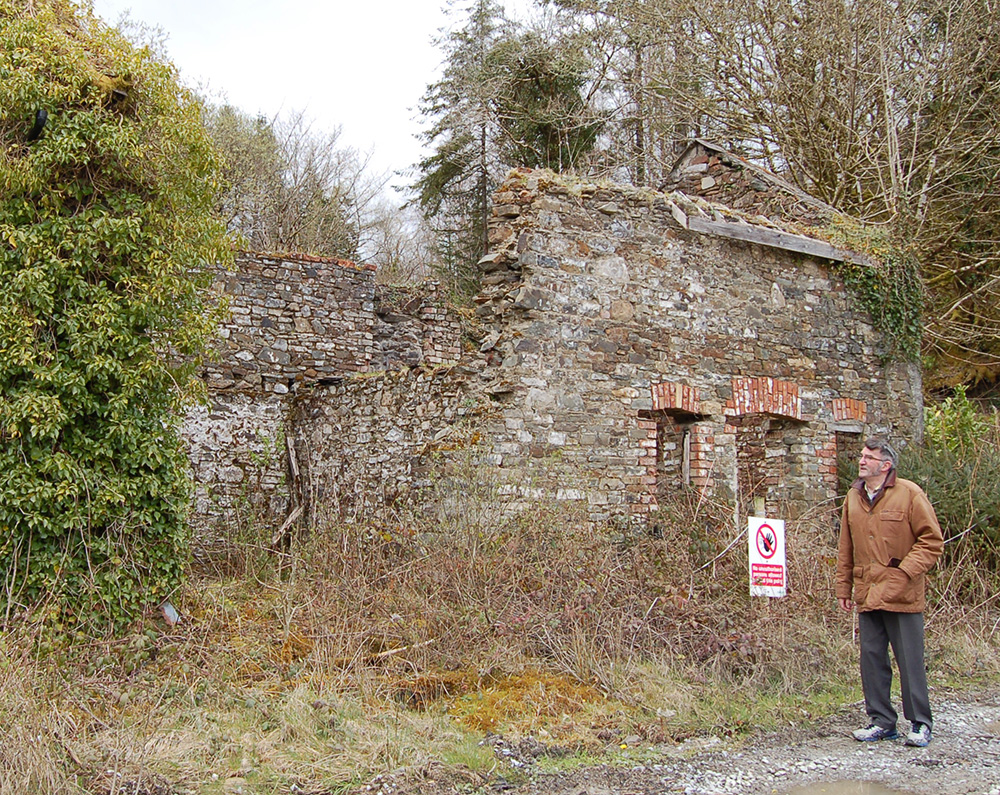
Marshall Estate
The Marshall property was ‘garnished with waving woods’ wrote Macarthy, and ‘this gentleman the personal acquaintance of Continental crowned heads is considered a kind and considerate landlord’:
There are some, and perhaps Father Charles O’Callaghan of Clogher, who think that Mr Marshall’s zeal for a future, outruns his concern for present worldly advantages in and out of season.6
Macarthy described Ballymacadam as the mansion house of the Marshall estate ‘built and inhabited by the celebrated Ralf Marshal’.7
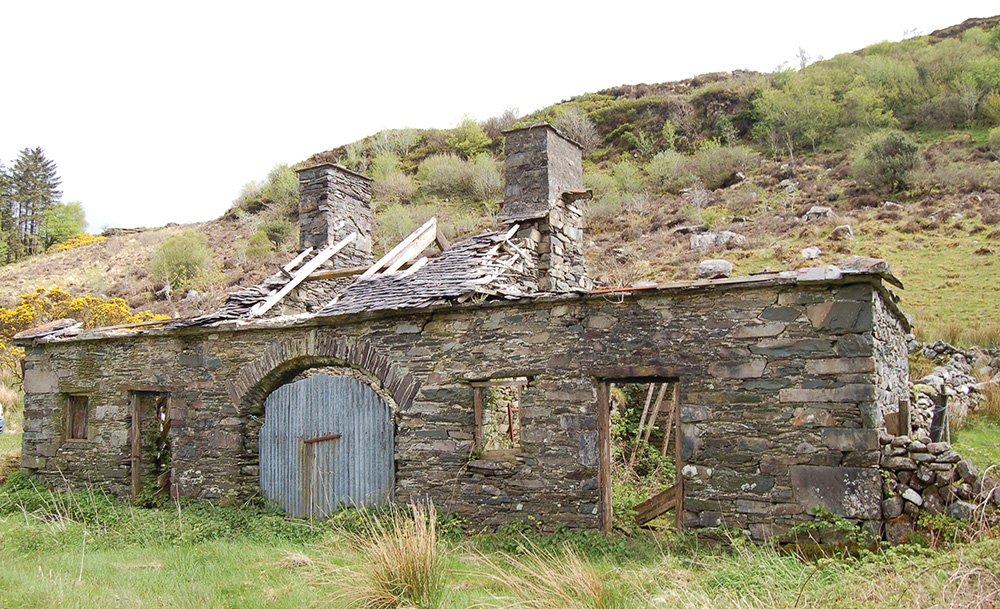
Castleisland and its hinterlands
Another residence, Knocknagore House, did not escape Macarthy’s observations:
On the Tralee road is still seen a skeleton of Knocknagore House where a gang of formidable robbers got possession of the inside of the house and were in the act of binding and ill using the inhabitants, but a resident serving boy, Daniel Lyne by name, jumped out of an upper window before the house was rifled, and as this created the impression that he went for the army, then in the Castleisland barrack, the assailants fled precipitately.8
Elsewhere, Cordal ‘belonged to the Twiss family’, Tullig was ‘a demesne of the Saunders’ stock’ and Scartaglin was ‘famous for the neighbouring place of Carol Mohr O’Daly, the hero of Eileen-a-roon and of his descendant, the Bishop of Coimbra, who was Latin historiographer of the Geraldines’.9
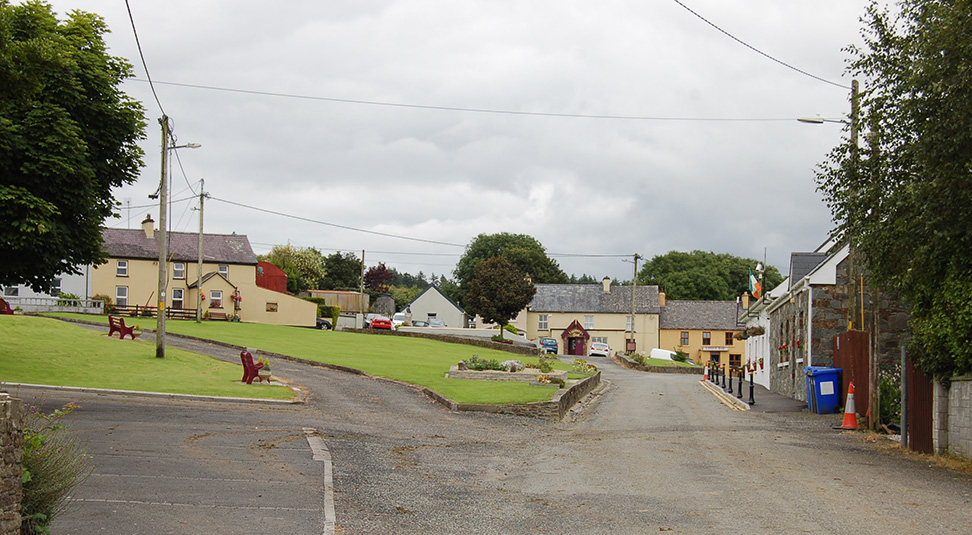
‘Williamstown’ (Ballydesmond), continued Macarthy, ‘foundation of one of the greatest governments in the world’, held many legends and traditions attached to the ‘three or four ruined castles of ancient Geraldines who had lorded it there’:
Certain secluded and quiet chapels, now burial-grounds, appertain to those approximating castles. They are connected by a neat rural bridge at cost to Mr Raymond, the proprietor. The Parliamentarian Colonel Phayre rushed into this valley from Cork in 1644 and swept away all the castles. The deed confirmed its title to Ardnagragh.
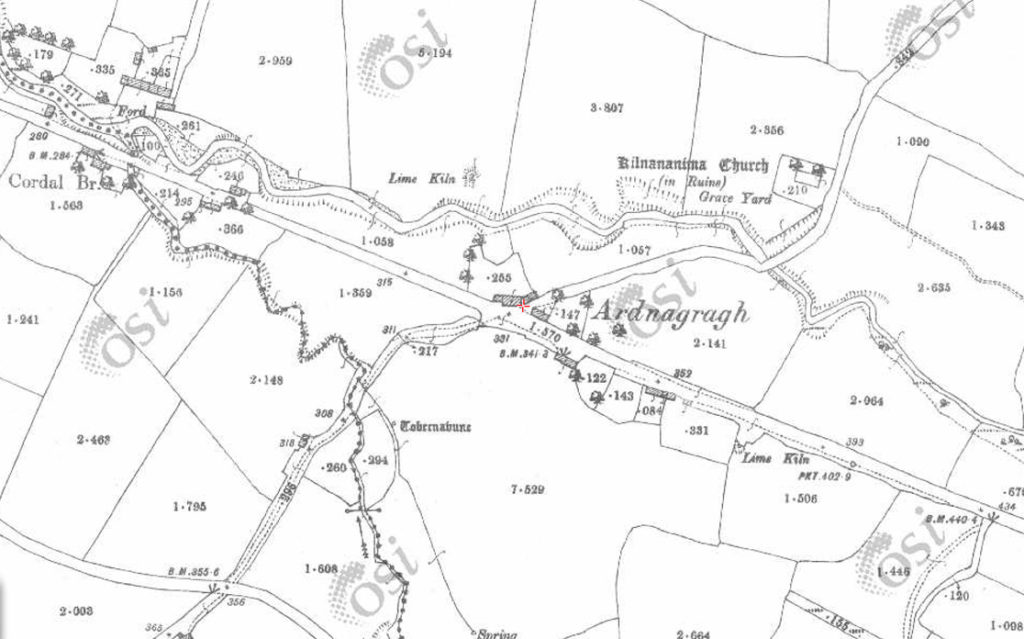
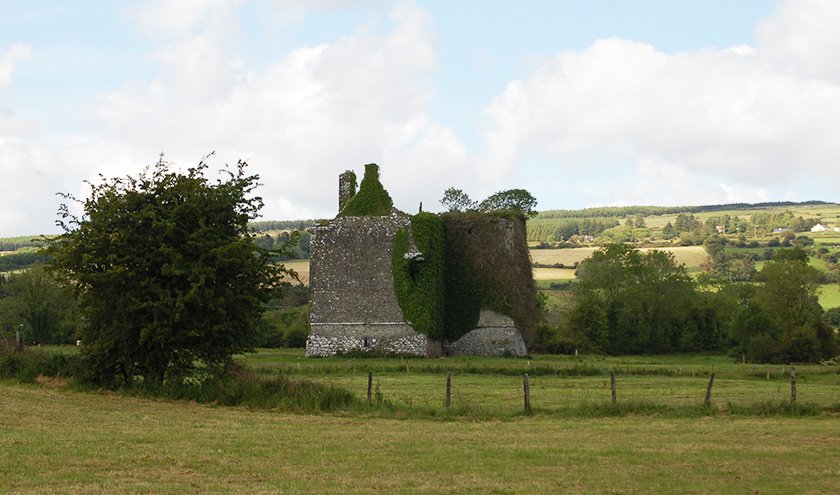
Macarthy added the history of his birthplace, Clydane:
The churches of Dysert and Killeentierna … The former built by an O’Connor, the latter by Macarthy (Bailea) of Tiernagoose and Clydane. Between the two and adjoining to Clydane is the coarse common Sliebh enig (mountain of a fair), used by cattle coming to the fair of Castleisland, until the neighbouring proprietors and Macarthy of Clydane, took it in and appropriated it about a century since.10
The essay concluded at the Market House, ‘built from the materials of the castle’, and 1798:
The once elegant and patrician assembly room, surmounting the Market-house, dispensary & magisterial sessions-room; and separated only by a road, stands beside the Castle, out of whose materials it was built – the barrack for 100 infantry … It was in its officers’ apartment that three non-commissioned officers of the yeomanry were murdered in 1798 … It was in the same chamber that Dean Crosbie, the Lord Brandon, long resided until he removed to the Glebe-House at Kilbanavane, where his curate became a magistrate.11
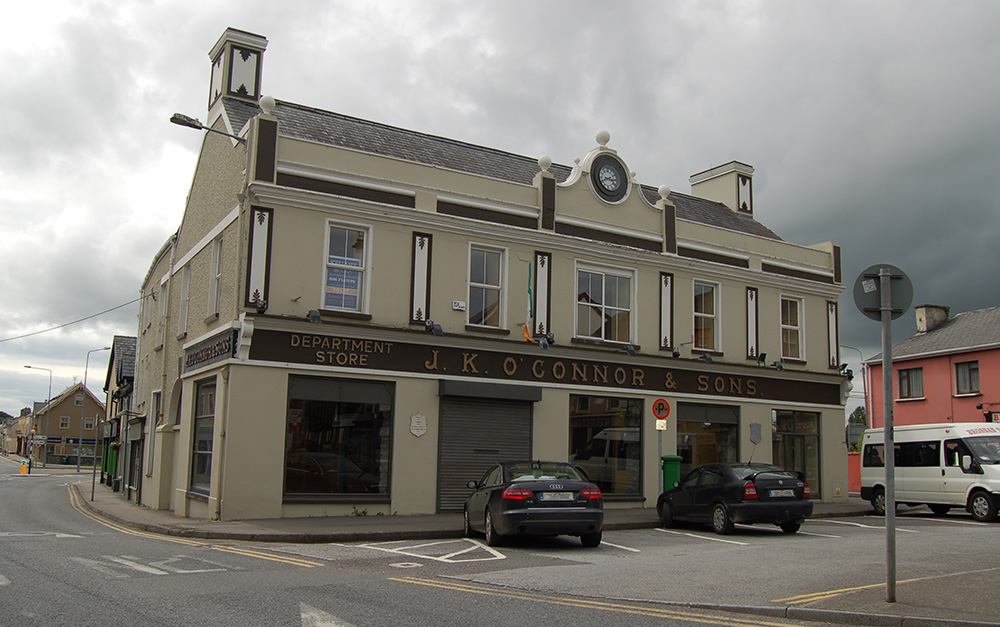
_______________
1 The document was published in the form of a letter to the editor of the Tralee Chronicle, 4 December 1866 signed by 'M'. A challenge to an item in the letter by someone who signed themselves 'Killeen' caused a mild literary wrangle in the columns of the same publication during which 'M' gave his name as E C N Rolf (which presents as a form of palindrome of Florence). Eight years later, the laying of the foundation of the new railway house and the erection of the new national school in the town caused Macarthy to write again to the same newspaper under his pen-name 'Rolf'; the letter, published 26 May 1874, bore echoes of his earlier sketch. John Florence Purdon Macarthy, son of Cornelius Macarthy of Clydane and Hannah, daughter of George Gilbert Purdon (Hannah died at Clydane 26 February 1843 – her siblings were Rowan Purdon Esq MD, Rev Richard Rowan Purdon FTCD, and Cherry, who married John Egan of Tralee) was probably born at Clydane. In June 1830 it was reported that 'our talented and accomplished young countryman, Mr Florence McCarthy of Clydane, Castleisland, was one of the successful candidates for sizarship at the examinations at Trinity College'. Following his education at Trinity College Dublin (his brother, Charles Purdon Macarthy, was also educated there), he was appointed principal of Sir John Ivory Endowed School, New Ross. At this time (1841) his address was Shantalla, Galway. In January of the same year he married, at Tralee church, Mary, daughter of 'late' John Sealy Esq of Rockfield House. About 1857, Macarthy set up a school in Tralee. His credentials were given as lecturer in the Great Feinaighan Institution, Luxembourg; lecturer in his own college chambers TCD; member of the college historical society; second master of the Old Galway College and translator of the Christian classics, Greek and Latin for the use of Catholic Collegiate Schools A dispute over a mis-directed letter heard in Tralee court in January 1861 revealed he had children and that his brother Charles kept a school in Strand Street, Tralee (Charles was found dead in his bed in James Street, Tralee in December 1877). In June 1861, Macarthy proposed a History of Kerry 'In press History and Directory of Kerry and its Towns'. It appears not to have been published: a correspondent of the Tralee Chronicle wrote some years later (1865), 'what has become of Mr J F M'Carthy's manuscript history of Kerry?'. Macarthy's address in 1867 seems to have been Church Street, Tralee. In 1876, he advertised the resumption of his school 'opposite the Courthouse in Nelson Street' and among the testimonials he supplied was a translation into Latin of the song The Irishman by a former student, Hugh Brosnan, Tullig House (see note 9). Macarthy died on 11 April 1884 at 1 Church Street, Tralee in his 76th year 'after long suffering. American and Australian papers please copy'. Special thanks to Eileen Chamberlain for assistance in identifying 'M'. 2 'It was in this form', continued the author, 'that the learned sorcerer had swam with stream of the Mang ... This was an effect of his lady's screams, of his countess who was Eleanor Butler, daughter of the ninth Earl of Ormond'. Elsewhere Macarthy wrote, 'The base of the mountain called Ardnigragh (hill of forays) at the little pretty, retired, pensive-looking old burial-ground, contains all that was perishable except the head of Garret, 16th Earl of Desmond'. Further reference The Legend of the Castleisland Goose (2015). 3 Macarthy added, 'A lady who puzzles Castleisland to reconcile how great ladylike common sense may be compatible with great personal advantages in one so young.' See IE MOD/37/37.3, IE MOD/55/55.1/55.1.26 and IE MOD/58/58.16/58.16.4 for further reference to Dr Harold. 4 Macarthy continued, 'At the ancient home of St Brendan he [O'Connell] has been a sort of miracle worker in the erection of temples for his religion and schools for youth'. See Castleisland Church and People (1981) by Fr Kieran O'Shea, pp48-53 (IE MOD/6): Jeremiah O'Leary (Father Darby) born 1788 appointed curate 1814 and parish priest 1830. Described as 'a true Christian gentleman'. Died at the Victoria Hotel, Killarney, owned by his nephew, on 19 October 1866. 'On leaving Castleisland all he possessed was £2'. Succeeded by Fr John O'Connell, born in Lixnaw in 1803. Built the parish churches of Ardfert, Cordal and Castleisland. Archdeacon O'Connell died in April 1885 and was interred in the new parish church of Castleisland 'which he had just lived to complete'. 5 Macarthy added, 'Here in lawless times dwelt a predatory rogue, Philip Cead Bho. In this den the bold rapparee held periodical fairs of the cattle he had abstracted from other counties, and thither owners among others might come and buy'. The legend of Philip Cead Bho is told in Philip of the Hundred Cows (2015). 6 This alludes to an altercation between the two parties which is reproduced in Killaha Ancestral Home of The O'Donoghue of the Glens: A Correspondence (2016). 7 Ralph Marshall, known also as Don Radolph Marshall, died of wounds in the Peninsular War at the Siege of Gerona in Catalonia where he had joined the Spanish patriots against Napoleon. An obituary to Marshall, who left a widow and young children, was published in Saunders News Letter, 16 December 1809. Ralph Marshall's eldest daughter and heiress, Elizabeth, married Robert Leeson, eldest son of Hon Robert Lesson, uncle and presumptive heir to the Earl of Milltown, at Marseilles on 12 January 1811. Elizabeth Marshall Leeson died on 7 October 1878 at 2 Almorah-crescent, St Helier's, Jersey in her 79th year. Marshall genealogy discussed in Killaha Ancestral Home of The O'Donoghue of the Glens: A Correspondence (2016). Ballymacadam, one of the Marshall properties, was leased in the nineteenth century; Bary's Houses of Kerry provides a number of associated names including Robert Madgett, who T M Donovan described as 'a great sportsman, and the man who by careful selection and breeding first originated the now famous Kerry Blues'. In the 1830s, Malachy Donelan Esq, stipendiary magistrate, was in residence. It was reported in February 1838 that 'During the height of the hurricane on Thursday last, a guard of the 85th Depot with two officers from Tralee marched for Castleisland by order of Malachi Donnellan Esq, Stipendiary magistrate, to prevent a riot of a most dangerous nature from a difference of opinion where a corpse should be interred'. Donelan's son was born at Ballymacadam in August 1838; in October Donelan was transferred to Sligo but died the following year: 'Mr Macdermott attorney and Mr Donelan Stipendiary Magistrate suddenly expired in Sligo last week' (Freeman's Journal, 11 May 1839). Donelan would seem to have been associated with the Donelans of Ballydonelan Castle. The history of this mansion was described in 1862: Ballydonelan Castle once surpassed in the magnificence of its internal arrangements and furniture any other in the west of Ireland was partially destroyed by fire last week. It was one of the most ancient seats in Galway, the O'Donelans occupying it in the 14th century when they lived in all the style of Irish princes. The estate of the Donelans of Ballydonelan like many another in this country became heavily encumbered and a few years ago changed owners in the great Land Mart of Henrietta-street. Mr James Donelan, the collector of customs at the Port of Exeter ... is a lineal descendant of the O'Donelans (Exeter Flying Post, 17 December 1862). The following might be of use: In 1830 the marriage took place of John Justice Cooper Esq to Frances, eldest daughter of M Donolan Esq and niece to Malachy Donelan of Ballydonelan Co Galway. In 1835, the Countess of Fingall died in her 62nd year, her remains buried at Killeen Castle, Co Meath, the vault of the Plunkett family. She was a sister of Malachy Donelan Esq of Ballydonelan, Co Galway (who predeceased her). After Donelan, Ballymacadam was associated with the Roche family. William, only child of John Roche Esq, was married in 11 November 1845 at Bally-M'Elligott Church to Eleanor, only daughter of Thomas Rice of Abbey O'Dorney Esq; a daughter was born at Ballymacadam the following year. John Roche appears to have canvassed and won the position of coroner in 1857. In the early 1860s John Roche was in jail, perhaps for debt, as he was declared bankrupt in 1862, in which year the property was advertised for lease (John Roche, 'late district coroner for 25 years' died at Castleisland on 12 December 1881). Dr Harold's name was associated with Ballymacadam in the mid to late 1860s and in the 1870s, Richard and Ellen O'Connor were in occupation. In a letter to the editor in 1885, Mrs O'Connor responded to what she described as a libellous attack on her. Her letter addressed the subjects of eviction and boycotting including the expulsion from schools in Listowel and Lixnaw of children named Browne, whose father had taken an evicted farm (Kerry Weekly Reporter, 13 June 1885 & Kerry Evening Post, 13 June 1885). Ballymacadam was advertised for sale in 1911 by the 'Misses O'Connor' after 'many years in their possession'. It was advertised for sale again in 1925 by John Leahy and in 1927 by David P Herlihy. 8 In a later letter, Macarthy revealed that the occupant was William Sealy: 'At this Knockanagore, within memory of many local inhabitants, and of Daniel Lyne, who was a lion in the drama, was enacted the almost concluding feat of the notorious brigands known as Peter Daly's banditti, consisting chiefly of disbanded soldiers after the battle of Waterloo. They awed a considerable portion of the county. They were annihilated when the late Harry Oliver shot one of them in defence of his life and property from a loft in his thatched house at Cooluinad, Bally-M'Elligott. At this Knockanagore, William Sealy, pronounced to be the handsomest man and most accomplished gentleman in Kerry after the late Knight of Kerry, was visited by those predatory night-walkers. All the household valuables, gold and silver plate, watches, knives and forks, &c, were piled together for extra-portation. Ladies and gentlemen were bound and gagged, when Daniel Lyne, a servant boy jumped out of an upper window at the risk of his life. At this a shot was fired, whereupon the gang retired with precipitation for fear of alarm at the military barrack here contiguous, which contained 100 infantry soldiers. That barrack is now the well-appointed and well-manned police barrack' (Tralee Chronicle, 26 May 1874). Knocknagore: John O'Donovan's Ordnance Survey Letters (Field Books) record - in addition to the spelling variations of Knocknagore and that the well near Billarough Stream had 'the best water in Kerry' - that the proprietor in 1841 was Edward Herbert Kenny and that Knocknagore was occupied at that time by a farmer. 172 acres of land at Knocknagore, estate of John and Rowland Bateman of Oak Park, Tralee, were sold in the Incumbered Estates Court in 1851; purchased by Henry Herbert for £105. The land was ordered for sale in 1887 in the matter of the estate of John Kenney Herbert. In 1905, by the death of John Kenney-Herbert, son of John Kenney-Herbert, of Clydeville, Co Cork and Knockanagore, Co Kerry, the Kenney-Herbert Estates passed to his sisters, 'the last survivors of that ancient Irish family' – Miss Kenney-Herbert and her sister, Mrs Kearney, wife of the Rev Neville Kearney, vicar of Marton, Warks. Their father John Kenney, assumed by royal licence the name and arms of Herbert in addition to those of Kenney. See Kenney-Herbert of Castleisland in BLG. Sealy: Michael O'Donohoe's notes on Sealy (IE MOD/55/55.1/55.1.256) show a family association with other property in the area including Mullaghmarkey and Magh (Edenburn), evidently built by the family. An address to the Marquis of Anglesea in 1831 was signed by William Sealy senior and William Sealy junior of Magh; Arthur Sealy of Magh; Eusebius Sealy of Mullamarky; Wm F Sealy of Brickfield and John F Sealy of Glenville. William Fitzmaurice Sealy of Brickfield (Brickfield was part of the lands of Maglass also called Copperas lot or ground) was married to Catherine Eager, daughter of Thomas Spring Eager of Cottage. On her death in June 1868 at Fond du Lac, Wisconsin she was described as widow. William Samuel Sealy of Magh House married Deborah, daughter of William Collis Esq of Fort William on 6 October 1842. Two of their children died of Scartletina at Magh House within one day of each other on 2 and 3 March 1850. Wm Samuel, son of 'late' W S Sealy Esq of Magh died on 10 April 1878 aged 34. Deborah Sealy, widow, died in March 1901. 9 Account of John Twiss in IE MOD/77. Notes on the Saunders family in IE MOD/55/55.1/55.1.251, IE MOD 58/58.27/58.27.1 and IE MOD/66. Tullig House was associated with the Young family in 1852, in which year and at which place occurred the death, on 19 December, from 'decline' of Gertrude, 'the exemplary wife of William England Young Esq and eldest daughter of the late Richard Taylor Esq of Rock Abbey, Askeaton, County Limerick' (Kerry Examiner, 4 January 1853). T M Donovan reminisced on the mansion: 'Very few nowadays know that the Tullig lands at one time belonged to the Chute family of Chutehall ... This house in the olden days was such a grand mansion that it had two entrances from the main roads ... Seventy years ago this big house was owned by Mr Patrick Brosnan, a brother of Canon Thade Brosnan's, one time PP of Caherciveen. His son Denis, a big powerful athletic man and his wife (nee Miss Keane, the handsomest woman in all East Kerry) ... In this generation the handsome Brosnan ladies of Tullig carried all before them' (Kerryman, 11 October 1930, 'English Settlers in East Kerry'). The legend of Eileen-a-Roon is included in Nine White Deer and other Irish legends (2015) at www.lulu.com. 10 Macarthy added, 'The right to the retention of their part of it, long after the sale of Clydane, formed the subject of a lawsuit on the part of the Macarthies, in Tralee old Courthouse, some forty years ago'. Notes on Clydane in IE MOD/60 and IE MOD/55/55.1/55.1.86. 11 Macarthy continued, 'His son, Anthony Mahon, it was that induced Mrs Hodgins, a woman with £70,000 in her own power, to elope with him. This produced a law suit of great notoriety, while he was a surgeon in the Dublin artillery barrack ... His mother was Penelope, daughter of the late Capt Gun or perhaps sister. Anthony was first cousin of the O'Gorman Mahon, of Clare, and reared in Castleisland, made a great noise in many parts of the world afterwards. It may be added that during the most active vigilance of Lord Brandon and his magisterial curate, and within view of their Glebe House, several stands of arms, carbines, guns and blunderbusses were taken away at noon-day from Ballinahown, the residence of Harry Oliver, at that time. Oliver had not long before broken up the robber party mentioned already by shooting of them while lighting a candle at the kitchen fire of his thatched cottage at Bally-M'Elligott'. Church of Ireland records show that James Mahon, son of William Mahon of Co Clare and husband of Penelope Gun, ministered at Castleisland at the same period as Rev William Crosbie (Church of Ireland in Co Kerry, a record of church & clergy in the nineteenth century (2011).) Rev James Mahon, who died at the Glebe House, Castleisland on 26 December 1826, and his wife Penelope Gun of Rattoo, Co Kerry (niece of Lord Ventry) who died on 12 November 1836, had two sons, Anthony Staughton (or Stoughton) and William Gun (or Gunn). The law suit alluded to was one of 'criminal conversation' brought in 1834 by Thomas Hodgens against Anthony Patrick Mahon. Thomas Hodgens married (legally, the first marriage was outlawed) in 1827 Anne, daughter of Henry Walker (died 1810) a Dublin 'contractor for lotteries'. They had two children, Henry Walker Hodgens (died 1843) and Thomas Walker Hodgens (1830-1867). In 1834, Anne Hodgens had a relationship with Anthony Patrick Mahon and they had two daughters, Anne (who died on 10 September 1861 at 15 Cavendish Place, London) and Penelope. Anne Hodgens, who died in 1870, left in her will the estate over which she had power to her daughter Penelope. Litigation commenced by Penelope's half brother, Thomas Walker Hodgens, who married in 1862 Mary Anne, daughter of Charles Harold Walker (and who had earlier, it was alleged, married Rosetta Taylor in 1856) and had Violet Mary Hodgens and Thomas Henry Hodgens, was continued, following his death in 1867, by his widow, Mary Anne, afterwards Mary Anne Breslin, wife of Edward, an hotelier in Bray. Penelope Mahon died in 1878. The research of the Mahon family by Declan Barron of Newpark House, Ennis, suggests that Anthony Patrick Mahon was Anthony Staughton (or Stoughton) Mahon (Anthony Patrick has also been referred to as Anthony Parker Mahon). Anthony Staughton Mahon died at his residence, 39 Great Marlborough-street on 7 October 1871 aged 65. His brother, William Gun Mahon, obtained a commission in the Royal Marines in 1833 which he resigned in 1843. In the years that followed, he was repeatedly in court and imprisoned for swindling. In 1848, Anthony and The O’Gorman distanced themselves publicly from the errant William, Anthony from both his brother and his cousin. By 1858, William was three times an insolvent debtor. He was bankrupt in January 1863 but in February, an order of discharge was granted. William was married in 1837 at St Clement’s Church, Strand, to Miss Eliza Duggan, niece of Dr James Duggan of Dublin, owner of the Shower Estate near Newport, Co Tipperary (William later claimed that he was underage and the marriage was invalid). He may have married again, for Charlotte Elizabeth Mahon, widow of ‘late’ Captain William Gunn Mahon and daughter of the late John Sessions Barrett, died at 53 Fern-grove, Liverpool on February 8 1891. The O'Gorman cousin was Colonel James Patrick O'Gorman Mahon (1800-1891) JP DL MP), son of Phadraic Mor (Patrick Mahon) of Newpark, Ennis, Co Clare. He lost his only son, St John, in September 1883. In The O'Gorman's will, his great nephew, Charles Patrick Mahon-Hagan, was described as 'only next of kin'. Mr T F Butler of Infield, Barrow in Furness, described as a grandnephew, attended The O'Gorman's funeral. Further reference: criminal conversation case outlined in Hodgens v Mahon, Tralee Mercury, 31 December 1834. See also Court of Exchequer, February 22nd, 1835 : Crim Con New trial before the Chief Baron : Hodgens v Mahon (1835). Hodgens v Hodgens law suits heard in 1874 and 1875.


